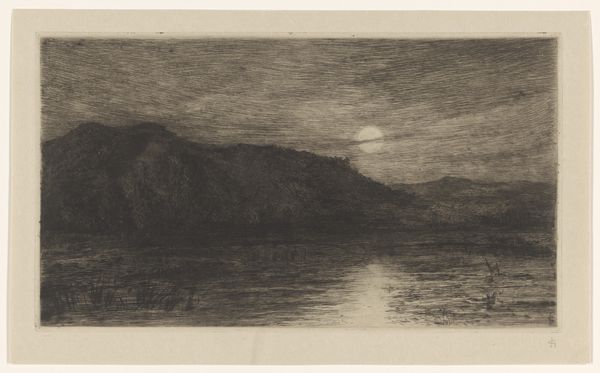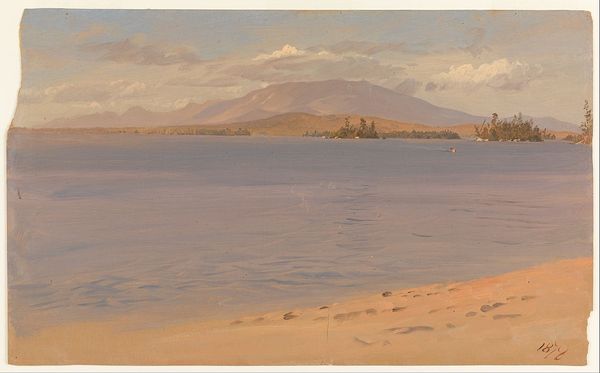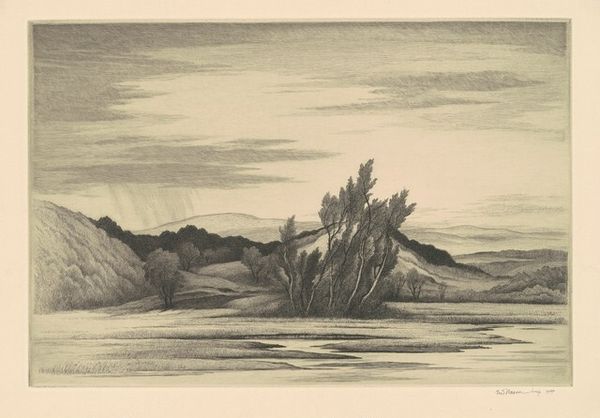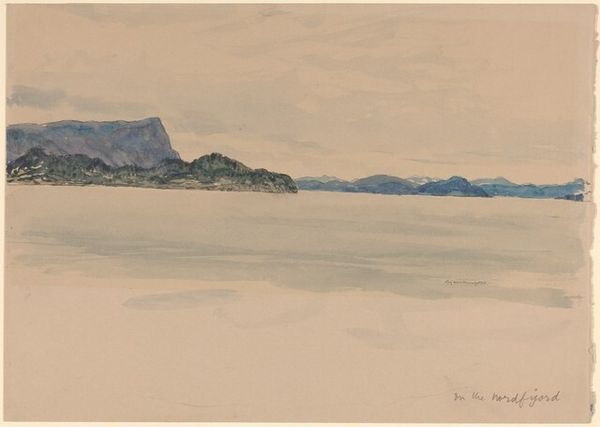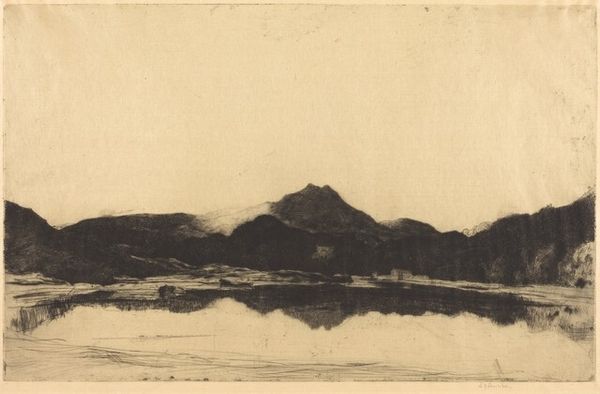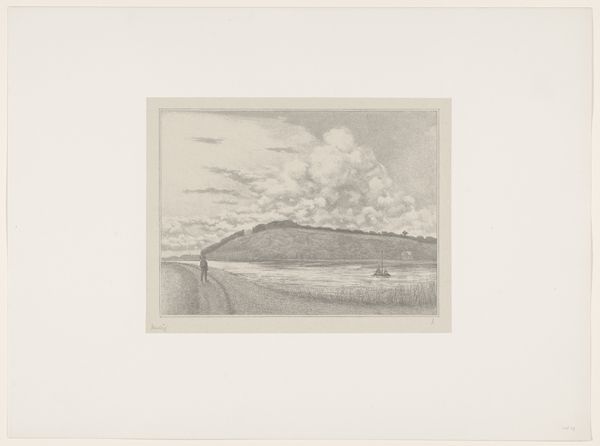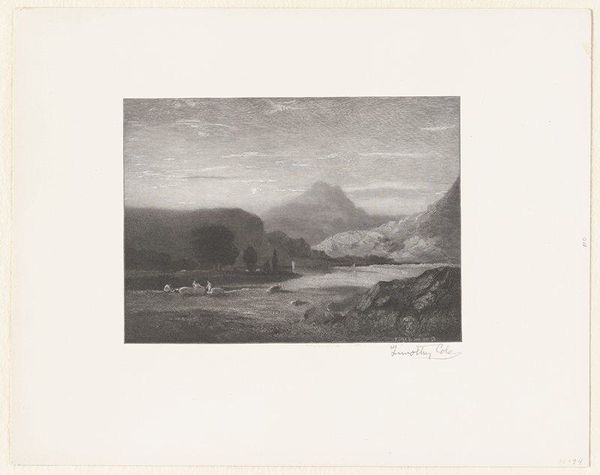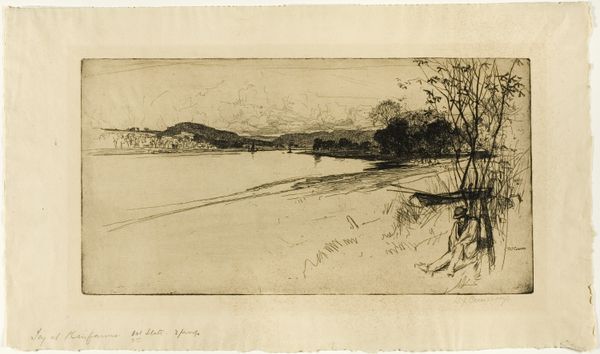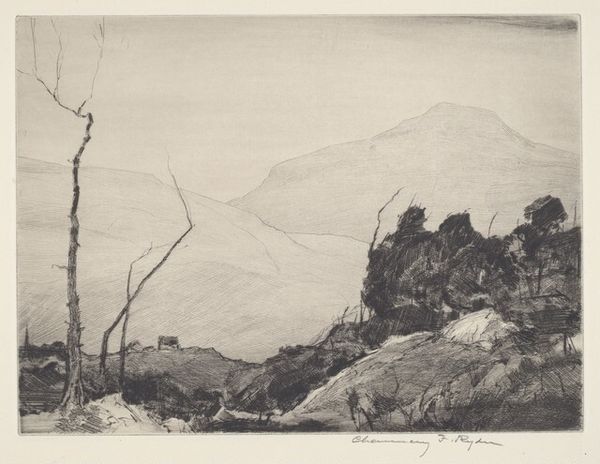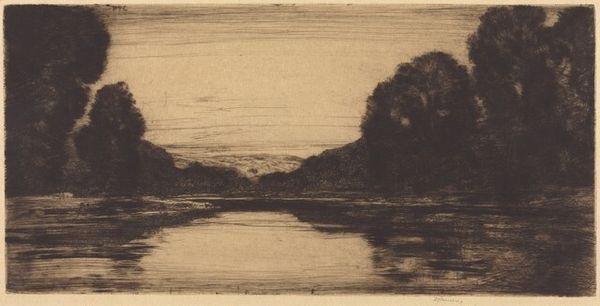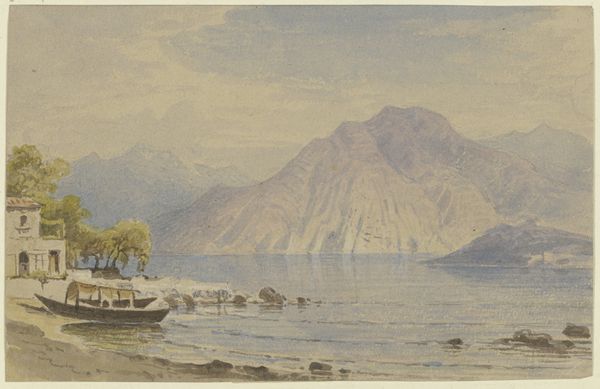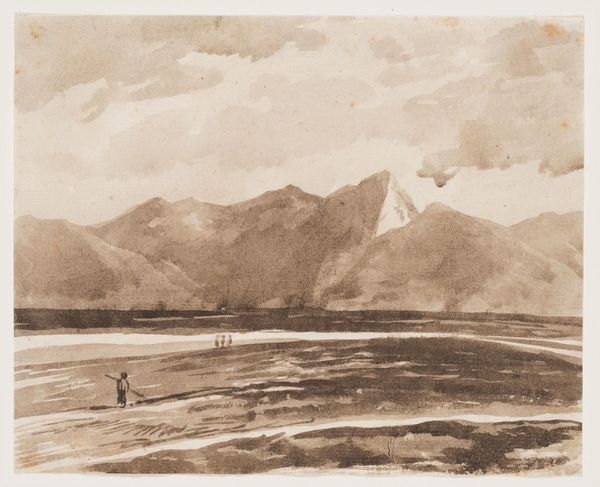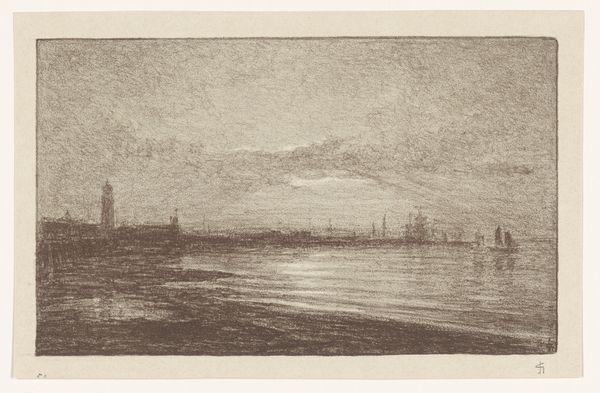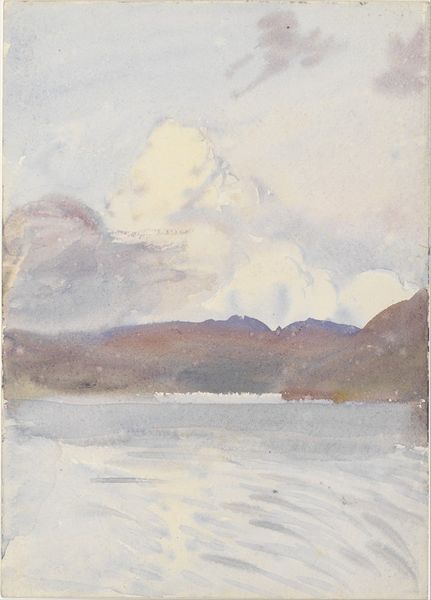
print, etching
# print
#
etching
#
landscape
#
geometric
#
realism
Dimensions: plate: 175 x 226 mm paper: 265 x 315 mm
Copyright: National Gallery of Art: CC0 1.0
Curator: Huc Mazelet Luquiens's etching, "Untitled (Diamond Head)," created in 1925, offers us a window into early 20th-century Hawai'i. Editor: My first impression is of a hushed serenity. The composition, anchored by that large, framing tree, leads the eye so gently across the water to the majestic Diamond Head. It feels very calm, yet meticulously crafted. Curator: Absolutely. Luquiens, of course, came from a background steeped in colonialism and western ideas, as it becomes part of a Hawaiian landscape, it's inevitable to ask how this affected his representation of the landscape and how the narrative shifts the image of Hawaiian land within and without the society in the period it was made. The landscape is the intersection of these complex, often unequal powers. Editor: And you see the materiality informing that tension even. Etching allows for a kind of reproducible ownership, turning a unique scene into something commodifiable for a wider audience, shaping mainland consumption and understandings of the islands. Look closely at the etched lines; there's an industrious, almost relentless quality in the way the details, like the leaves and ripples of the water, have been built. Curator: That systematic rendering, precisely, connects back to the tradition of landscape art as a way to assert claims. There are cultural implications here, too. Where are the indigenous people in this landscape? Are they subsumed within nature, or purposefully omitted, or perhaps are their representations informed by Western preconceptions? How can it show the colonial influence through it's visual structures? Editor: You are right. Their presence is spectral, perhaps, within the resources themselves, in the way their labour might be connected with maintaining those shoreline structures we see. I am wondering if there is more to unpack in Luquiens choice of etching, or was this merely a pragmatic response that aided him and served his artmaking and his access to an audience back on the mainland. I am certain there are additional insights and considerations to explore about the work he created. Curator: The nuances we uncovered today by relating the materiality to broader considerations such as Hawaiian culture, raise pertinent queries about the nature of seeing and depicting culture. Editor: Agreed, an everyday place rendered meticulously as something very meaningful.
Comments
No comments
Be the first to comment and join the conversation on the ultimate creative platform.
